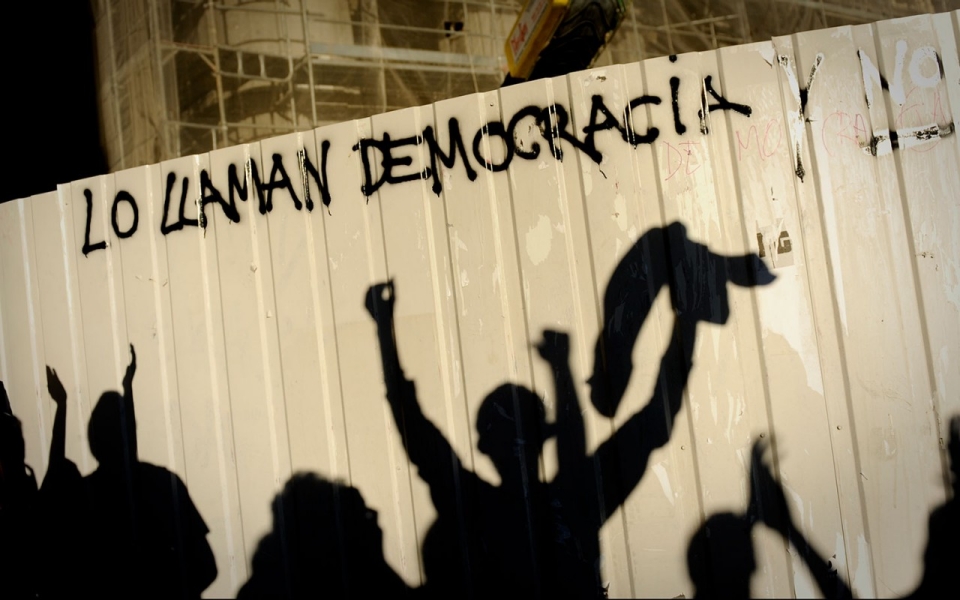For unemployed and depressed youths, job-training programs and mental-health services are more important than ever

In the shadow of the Great Recession lies a deep depression: Youths in their 20s and early 30s are hitting new lows. Compared with older workers who have lost their jobs, young people face more complex and layered hardships that could last most of their lives. They are experiencing disproportionately high unemployment, stretching indefinitely into the future, in an increasingly unequal and uncertain social landscape. And just when they are most in need of social support, the recession has led lawmakers to erode the welfare and employment programs that youths need to move themselves — and the economy they have inherited — toward recovery.
For young people in the United States and Europe, there is an emotional layer to this economic malaise. According to a recent U.K. survey of 2,161 people ages 16 to 25 by nonprofit advocacy group the Prince’s Trust, the unemployment epidemic is driving a mental-health crisis. While overall happiness levels for the surveyed youths stayed about level over the past year, reported emotional health fell significantly for the segment that is out of the workforce and not in school or job training. These young people experienced feelings of despondency and hopelessness at a higher rate than their peers. Chronically unemployed youths were more likely to have experienced panic attacks, engaged in self-harming behavior or felt suicidal. Mental-health problems struck 4 in 10 jobless young people “as a direct result of unemployment,” according to the Prince’s Trust.
One woman interviewed for the study said, “Being out of work stripped away my self-worth and made me feel like a waste of space.”
In the U.S., the Centers for Disease Control and Prevention has registered similar trends among American youths in the recession era. National surveys show that, for adolescents ages 12 to 17, self-reported mental-health status and physical well-being got worse in 2009 and 2010 compared with the prerecession years of 2001 to 2004. These problems were clustered among youths from low- and middle-income families.
Without a job or educational prospects, many end up blunting their misery through desperate means. In the U.K. survey, long-term-unemployed youths were much more likely (PDF) to have been prescribed antidepressants or to take drugs. In the U.S., a recent public-health analysis (PDF) found that “young single men” were particularly prone to drug abuse during economic hard times.
But the data just confirm what young people have intuited: They are wrestling every day with a real sense of structural injustice. For many millennials, finding any job is a struggle — much less the one that fits one’s degree. Instead of fulfilling aspirations to do better than one’s parents, they are starting out life crushed by a hostile job market and overwhelming student debt, with no financial fallback if they run into a health crisis or fall behind on rent.
Despite frequent media ridicule that characterizes them as immature and entitled, millennials are confronting a daunting cycle of social alienation that seems unprecedented. Unemployment for people ages 16 to 24 hovers around 16 percent, or twice the national rate (PDF). Previous eras of high youth unemployment, such as the Great Depression, flowed into periods of robust growth. But the sluggishness of the current so-called recovery does not suggest that a dramatic boom will follow the bust. Historically, high joblessness among youths is not unusual; however, government data show the gap between young and older adult unemployment rates has expanded to a record high. Labor force participation among young people has fallen steadily in recent years, suggesting that some are being discouraged from even seeking a job. During the recession, the gap between whites and blacks and Latinos has widened, marking a retreat from intergenerational progress toward racial and economic equality.
It is true that middle-aged unemployed people often have a tougher time getting hired again later in life or rebuilding from scratch after losing a career. Yet for the young, joblessness may leave a more insidious lifelong impression. Long-term studies have revealed far-ranging effects of joblessness, known as scarring. Contrary to the idea that the economy will simply bounce back over time, historical data projections reveal that when people start adulthood in deep unemployment, the slump tends to last well beyond their youth. Of course, resilient young workers will adapt their lifestyles to such destabilization, but overall economic drag often leads to depressed future wages and hampers national economic productivity.
According to a study by the public-policy think tank Center for American Progress, which breaks down the cost of the roughly 1 million young people who were long-term unemployed at the height of the recession, the collective social losses (including public benefits paid, forgone tax revenues and setbacks in gaining skills and work experience) add up to a sort of millennial tax of “more than $20 billion in earnings over the next 10 years,” writes Sarah Ayres, a policy analyst at the center. (That is $22,000 per young person — close to the cost of attending a year of state college).
Emotionally, these hardships are compounded by the shredding of safety nets. Access to social and health services has shrunk or failed to meet soaring public needs. The National Alliance on Mental Illness reported that states collectively cut more than $1.8 billion from their mental-health budgets from 2009 to 2011, with some states losing more than one-fifth of their funding despite heavy demand for services. And the Kaiser Family Foundation reported in 2011 that more than two-thirds of children with mental-health needs had been left without help.
Paradoxically, research suggests (PDF), the troubled young single men who are especially at risk of suicide and drug abuse are often excluded from social support programs, which target aid to poor mothers and children.
A steady job is key to regaining stability. Yet according to the National Priorities Project (NPP), a nonprofit organization that seeks to make national budgets more transparent, federal funding for major youth jobs and training programs plunged by about $1 billion from fiscal years 2002 to 2012, adjusting for inflation. While the Great Depression saw a surge in jobs programs for young people, today’s flagship youth jobs program, Americorps, which provides environmentally and community-based service jobs, can serve only about 80,000 people each year, out of some half a million applicants, according to (PDF) the millennial-focused advocacy group Young Invincibles. In 2005, Congress defunded Youth Opportunity Grants, a major initiative providing vulnerable young people with targeted training and job-placement services. On the local level, fiscal austerity has gutted community-based youth employment programs that connect struggling young people to the workforce. Today nearly 7 million young adults are what the NPP calls “disconnected” — out of school and jobless.
Can we pull out of this mess? Oddly, the kids who have been derailed by the recession might be inadvertently laying a stronger new foundation. A study (PDF) released in July of survey data on American teens shows that young people’s attitudes have become “more collectivistic and less individualistic” since the recession began. Potentially reversing a trend toward materialistic social values that stretches back to the 1970s, young people expressed more communitarian priorities, such as concern for the environment and less interest in owning expensive things. The paper’s lead researcher, Heejung Park of the University of California at Los Angeles, told me that “despite struggles they face, youths in economic challenges may cultivate these prosocial values, perhaps because they themselves struggle and come to understand the importance of others and the society.”
Today’s politicians should take a break from slashing budgets and demanding more self-reliance from the destitute and, instead, take some lessons from recession-roughened youths. They may be jobless, but many are busy cutting a fresh path toward a more just future. They simply need political institutions to invest in their generation — and to trust them to wield their full power.


